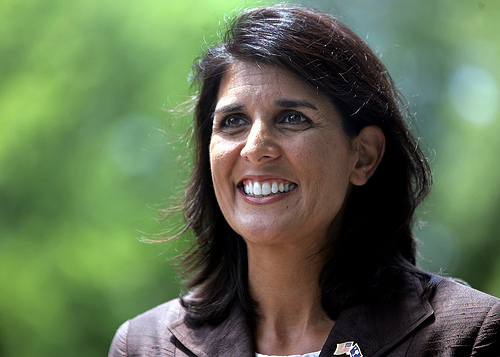Victories by Latino candidates in last week’s midterm elections mean there will be a record number of Hispanics serving in Congress. The midterm balloting also saw the historic election of the nation’s first female Hispanic and first female Indian-American governors.
What do they all have in common? All are members of the GOP.
Another common thread is that they all represent classic American success stories. Susana Martínez, the governor-elect of New Mexico, was born and raised in El Paso, Texas, as were her parents, and is a successful prosecutor and district attorney. Nikki Haley, the governor-elect of New Mexico who is the daughter of immigrants from India, built her family business into a multi-million dollar operation. (She joins Bobby Jindal (R-LA) as the second Indian-American Republican southern governor). Brian Sandoval, who was elected governor of Nevada, was born in California to immigrants from Mexico and rose to become a U.S. District Court judge. Then there’s Marco Rubio, son of Cuban exiles in Florida, who is probably the most conservative of the group, and will join Robert Menendez (D-NJ) as the second Hispanic in the U.S. Senate.
The new Republican Hispanic U.S. Representatives are Idaho’s Raúl Labrador, Florida’s David Rivera, Texas’ Bill Flores and Francisco Canseco, and Washington State’s Jaime Herrera.
All of these electees are against illegal immigration, but not all of them supported Arizona’s SB 1070.
In a statement, the National Association of Latino Elected and Appointed Officials (NALEO) said the success of these Hispanic Republicans shows that Latino candidates can cross color barriers, like President Obama did in 2008.
“Several of these candidates successfully ran in districts which do not have Latino majorities, demonstrating that Latinos are able to run in non-Latino districts and can have broad appeal across all ethnicities and communities.”
It’s true that these newly-elected officials certainly did not win with a majority of the ethnic vote—they won by appealing to other communities. A wide majority of Latinos voted for Democratic candidates across the country, and notably, helped Senate Majority Leader Harry Reid (D-NV) squeeze his way into other term. Two-thirds of Latino voters in Nevada supported the Democratic candidate for governor, Rory Reid, who lost to Republican Brian Sandoval. Florida, as usual was the exception, with 55% of Latinos voting for Rubio. However, Rubio only got a third of Florida’s growing non-Cuban-Hispanic population. As for Haley, the small Indian-American population in South Carolina couldn’t swing the vote in her direction even if she had won all of their votes.
So these wins don’t really reflect a change in immigrant voting patterns. What they do show is the diversity of immigrant communities. Some states have huge immigrant populations, some have tiny ones. And the populations also vary wildly by type—looking at Nevada and New Mexico, for example, they have drastically different, though large, Hispanic populations. In New Mexico only 16 percent are foreign born, while in Nevada 44 percent were born elsewhere.
The one clear takeaway of the 2010 midterm elections is that assimilated first and second generation immigrants can successfully convince a majority of voters that they have a powerful combination of American values and leadership skills. Now that they’re in office, we’ll see what they do.
In New York, Latino voters have a special place in the political landscape. El Diario’s Catalina Jaramillo talked about it recently on The Perez Notes, a web-radio program hosted by LaGuardia Community College in New York. Listen here.
Feet in Two Worlds election coverage is supported by the New York Community Trust and the John S. and James L. Knight Foundation.





